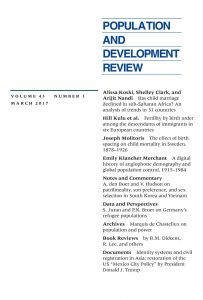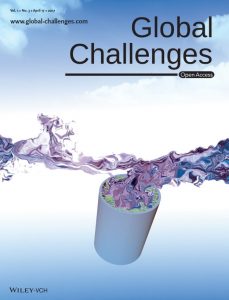"How was your 2015?" and other daft questions

“(369-365) Happy (6323650243)” by Sander van der Wel from Netherlands – [369/365] Happy. Licensed under CC BY-SA 2.0 via Wikimedia Commons – https://commons.wikimedia.org/wiki/File:(369-365)_Happy_(6323650243).jpg#/media/File:(369-365)_Happy_(6323650243).jpg
I always think that New Year is a follow-up of a slightly different flavour – best-of-the-year round-ups in sport, film and TV; New Year’s resolutions; an impending month of diets, detox and mild depression waiting around the corner.
Christmas is more of a time of hedonistic experience, compared to New Year’s emphasis on evaluation, taking stock and planning ahead. I write this after re-visiting one of my books of the year “Happiness by Design” by Paul Dolan of the LSE. It’s a breezy, easy read by a scholar who’s worked extensively on how we measure happiness, and how we try to get more of it. As such it offers a nice balance between a solid collection of empirical findings and a kind of self-help book – one that is thankfully devoid of wild claims it can turn you into a millionaire or an Obama-like orator.Dolan’s made his name with two main achievements. First was his contribution to the UK Government’s MINDSPACE document – a kind of ‘toolkit’ for nudge-style behavioural interventions, which since its publication in 2010 has become the Institute of Government’s most-downloaded resource ever. As I’m just finishing an internship within the UK civil service, I can personally vouch for just how far the MINDSPACE toolkit has become accepted wisdom for behaviour change policy.
Dolan’s other major contribution, and the one most pertinent here, is to how happiness, or ‘subjective well-being’ as social scientists like to call it, is measured in social surveys.
Dolan draws on Danny Kahneman’s idea – which I’ve written on before – that we have two parts of our self: an experiencing self, and an evaluating self. Our experiencing self is the one which operates every day, hour and minute – tasting feeling, seeing and hearing – while our evaluating self is the one which ‘keep score’ and reflects on the past. The experiencing self is at work when the doctor asks us “Does this hurt?” whereas the evaluative self is active when the doctor asks us “How have you been recently?”.
Kahneman and Dolan agree that we often place far more emphasis on the evaluating self at the expense of our experiencing self. This is why we have friends who might say they are happy with their job, but then always seem to complain about it when they come home from work each day. Their evaluative self considers the salary, job title, status – the idea of their job- and neglects the fact that most of their 37.5 hours a week are a rather dull, stressful and/or unfulfilling experience.
Dolan says that this is why photographs often do not reflect reality, and videos are actually a far more accurate assessment of our real enjoyment of any particular event. We can all smile for the camera for a second or two – only for frowns to re-occupy our faces moments later – but on video, our true emotions over a prolonged time are likely to show up. For most of us, except perhaps seasoned politicians, faking a smile for extended periods is very hard.
I think this kind of dissonance is also enhanced by the use of technology and of alcohol. I have a friend who DJs in a nightclub, and he recently me that he watches the young people milling around the dancefloor, sometimes looking a bit lost and drunk. But when a camera-phone comes out, they all turn on their well-practiced smiles for a few seconds, hugging and screaming for the camera, only to return to their stupor seconds later. The next day, with booze-induced gaps in their memory being filled by those pictures taken of them smiling and hugging, they might evaluate their night out as a success, whereas at the time their actual experience was quite different.
Dolan and his colleagues Richard Layard and Robert Metcalfe advised the UK Office of National Statistics on how social scientists might overcome this by asking questions which make us engage our experiencing self – our “internal video camera” – instead of the usually dominant evaluative self – our “internal selfie stick”, if you like. Thanks to the impact of Dolan et al now, in most ONS questionnaires, the following questions will appear. You may have seen them yourself:
- Overall, how happy did you feel yesterday?
- Overall, how anxious did you feel yesterday?
These questions attempt to gauge happiness by accessing our experiencing self, but as Dolan admits in his book, even they they are not ideal because of the time-lag between yesterday and today, which might lead us to approach the question in an evaluative way, and which may also be biased by our happiness levels at the time of being surveyed – i.e. if we feel happy/anxious when we answer the question, we might infer that we also felt similarly happy/anxious yesterday.
A more accurate method is the Day Reconstruction Method (DRM) proposed by Kahneman et al (2004) which is like a happiness diary, breaking down our routines into smaller chunks, which might get at those experiences without letting our pesky evaluative side getting in the way. Below is an example.
| Fill out this day reconstruction method diary for yesterday to help you get feedback on your happiness. Include activities that have a natural start and stop time, such as when you changed tasks or locations. | ||||||
| Episode | Time it began | Time it ended | What were you doing? | Who were you with? | Pleasure (0-10) | Purpose (0-10) |
| 1 | ||||||
| 2 | ||||||
| 3 | ||||||
| 4 | ||||||
| 5 | ||||||
| 6 | ||||||
Note that Dolan breaks down happiness into pleasure (activities we might consider as ‘fun’) and purpose (activities we might consider as ‘fulfilling’). Some activities might be more pleasant and less purposeful (like having drinks with friends); or more purposeful than pleasant (like studying or cleaning); and some things, might be a bit of both (like playing sport or being creative). It will be different for everyone, of course.
Also note that this strategy shares many similarities with those associated with mindfulness. Dolan recognises this, although seems to prefer his more ’empirical’ approach to measuring and increasing happiness. Each to their own, I suppose.
Now, it’s all very well saying all of this, but I thought it was high time that I took the plunge myself, to find out what actually makes me feel happy – in terms of both pleasure and purpose – rather than what I think, or what society tells me, ought to make me happy. So I will be completing my own DRM diary for a few days in the new year, using (at least) one working day and one weekend day. Hopefully it will give me an idea of which activities give me a good balance of both purpose of pleasure; which habitual activities were a waste of my time in 2015; and which ones I should do more of to be happier in 2016.
I would urge you to try it yourself. I’ll be reporting back with what I’ve learned in January. Until then, I do hope your holiday is brimming with pleasure, purpose, and high levels of that magical stuff we call ‘subjective well-being’.
Dolan, P (2014) Happiness by Design: Finding Pleasure and Purpose in Everyday Life. Penguin.





1467-7660/asset/DECH_right.gif?v=1&s=a8dee74c7ae152de95ab4f33ecaa1a00526b2bd2)